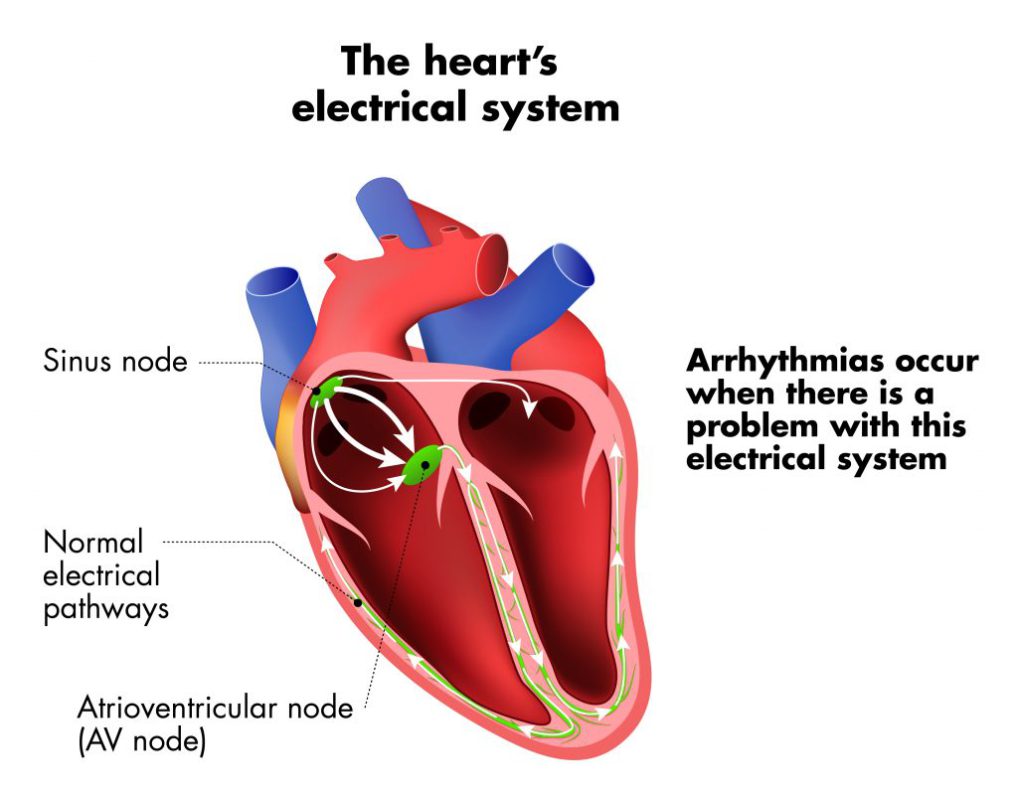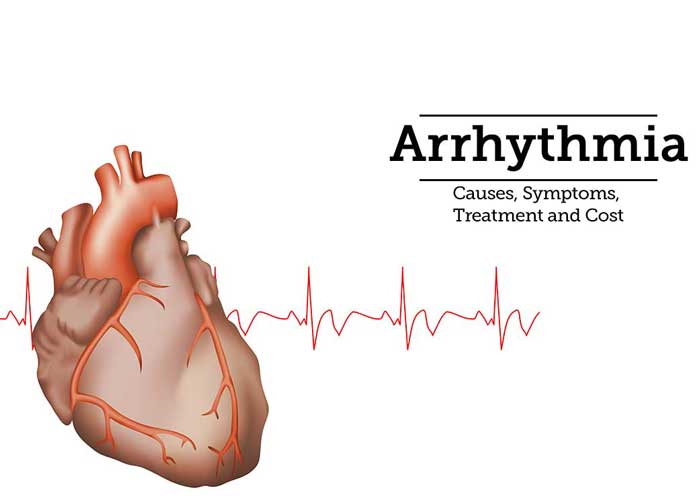Arrhythmia Treatment in Iran
Arrhythmia Treatment in Iran is a condition in which the heart beats irregularly or too quickly or slowly. The treatment of arrhythmia depends on the type and severity of the arrhythmia , as well as the underlying cause. Here are some of the most common for arrhythmia Treatment in Iran:
1. Medications: Certain medications, such as antiarrhythmic drugs, beta-blockers, and calcium channel blockers, can be used to control the heart rate and rhythm and prevent recurrent episodes of arrhythmia.
2. Electrical cardioversion: Electrical cardioversion is a procedure in which an electrical shock is delivered to the heart to reset the heart’s rhythm. This may be done in an emergency situation or as a planned procedure.
3. Catheter ablation: Catheter ablation is a minimally invasive procedure in which a catheter is inserted through a blood vessel and guided to the heart, where it delivers energy to destroy tissue that is causing the arrhythmia.
4. Implantable devices: Implantable devices, such as pacemakers and implantable cardioverter-defibrillators (ICDs), can be used to regulate the heart rate and rhythm and prevent recurrent episodes of arrhythmia Treatment in Iran.
5. Lifestyle changes: Making lifestyle changes, such as quitting smoking, reducing alcohol and caffeine intake, getting regular exercise, and managing stress, can help improve heart health and reduce the risk of arrhythmia Treatment in Iran.
The choice of treatment for arrhythmia will depend on the specific type and severity of the arrhythmia, as well as the patient’s overall health status and other factors. It’s important to discuss the risks and benefits of each treatment option with your healthcare provider to determine the best course of action for your specific situation.
Arrhythmia Procedures and devices
Here are some procedures and devices commonly used to treat arrhythmia:
1. Electrical cardioversion: Electrical cardioversion is a procedure in which an electrical shock is delivered to the heart to reset the heart’s rhythm. This procedure is typically done under sedation or general anesthesia and may be used to treat certain types of arrhythmia, such as atrial fibrillation.
2. Catheter ablation: Catheter ablation is a minimally invasive procedure in which a catheter is inserted through a blood vessel and guided to the heart, where it delivers energy to destroy tissue that is causing the arrhythmia. This procedure may be used to treat certain types of arrhythmia, such as atrial fibrillation or ventricular tachycardia.
3. Implantable cardioverter-defibrillator (ICD): An ICD is a small device that is implanted under the skin of the chest and connected to the heart with wires. The device continuously monitors the heart rhythm and delivers an electrical shock to the heart if it detects a life-threatening arrhythmia, such as ventricular fibrillation.
4. Pacemaker: A pacemaker is a small device that is implanted under the skin of the chest and connected to the heart with wires. The device sends electrical signals to the heart to regulate the heart rate and rhythm, and may be used to treat certain types of arrhythmia, such as bradycardia.
5. Cardiac resynchronization therapy (CRT): CRT is a procedure in which a special type of pacemaker is implanted to help coordinate the contractions of the heart’s ventricles. This therapy may be used to treat certain types of arrhythmia, such as heart failure with a slow heart rate.
The choice of procedure or device will depend on the specific type and severity of the arrhythmia, as well as the patient’s overall health status and other factors. It’s important to discuss the risks and benefits of each treatment option with your healthcare provider to determine the best course of action for your specific situation.

Treating the cause of your arrhythmia
In addition to treating the symptoms of arrhythmia, it’s important to identify and treat the underlying cause of the arrhythmia to prevent future episodes. Here are some potential causes of arrhythmia and how they may be treated:
1. Heart disease: Heart disease, such as coronary artery disease or heart valve problems, can disrupt the normal electrical signals in the heart and lead to arrhythmia. Treating the underlying heart disease, such as through medication, lifestyle changes, or surgery, can help reduce the risk of arrhythmia.
2. High blood pressure: High blood pressure can cause the heart to work harder than normal and increase the risk of arrhythmia. Treating high blood pressure through medication, lifestyle changes, or both can help reduce the risk of Arrhythmia Treatment in Iran.
3. Hyperthyroidism: Hyperthyroidism, a condition in which the thyroid gland produces too much thyroid hormone, can cause the heart to beat faster than normal and increase the risk of arrhythmia. Treating hyperthyroidism, such as through medication or radioiodine therapy, can help reduce the risk of Arrhythmia Treatment in Iran.
4. Sleep apnea: Sleep apnea, a condition in which breathing is interrupted during sleep, can cause low oxygen levels and increase the risk of arrhythmia. Treating sleep apnea through lifestyle changes, such as losing weight or using a continuous positive airway pressure (CPAP) machine, can help reduce the risk of Arrhythmia Treatment in Iran.
5. Medications: Certain medications, such as decongestants, stimulants, and some antidepressants, can increase the risk of arrhythmia. Switching to a different medication or adjusting the dosage may be necessary to reduce the risk of Arrhythmia Treatment in Iran.
It’s important to identify and treat the underlying cause of arrhythmia to prevent future episodes. Your healthcare provider can help determine the underlying cause of your arrhythmia and recommend the most appropriate course of treatment.
Care after Arrhythmia surgeries
After undergoing arrhythmia surgery in Iran, it’s important to follow your healthcare provider’s instructions for post-operative care to ensure a smooth recovery and reduce the risk of complications. Here are some general guidelines for post-operative care after arrhythmia surgery in Iran :
1. Medications: Your healthcare provider may prescribe medications to control your heart rate and rhythm and prevent blood clots. Be sure to take your medications as directed and report any side effects or concerns to your healthcare provider.
2. Rest and recovery: Your healthcare provider will likely recommend that you rest and avoid strenuous activity for a period of time after surgery. You may need to avoid driving and lifting heavy objects for a certain period of time as well.
3. Wound care: If you have an incision, it’s important to keep the area clean and dry to prevent infection. Your healthcare provider will provide instructions on how to care for your incision and when to follow up for removal of any stitches or staples.
4. Follow-up appointments: You will likely need to have follow-up appointments with your healthcare provider to monitor your recovery and adjust your medications as needed.
5. Lifestyle changes: Your healthcare provider may recommend lifestyle changes, such as quitting smoking, reducing alcohol and caffeine intake, getting regular exercise, and managing stress, to help improve heart health and reduce the risk of Arrhythmia Treatment in Iran recurrence.
It’s important to follow your healthcare provider’s instructions for post-operative care to ensure a smooth recovery after arrhythmia surgery. If you have any questions or concerns about your recovery, be sure to speak with your healthcare provider.
علاج عدم انتظام ضربات القلب في إيران

